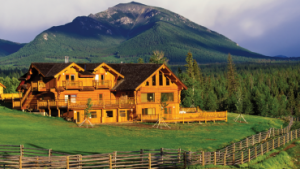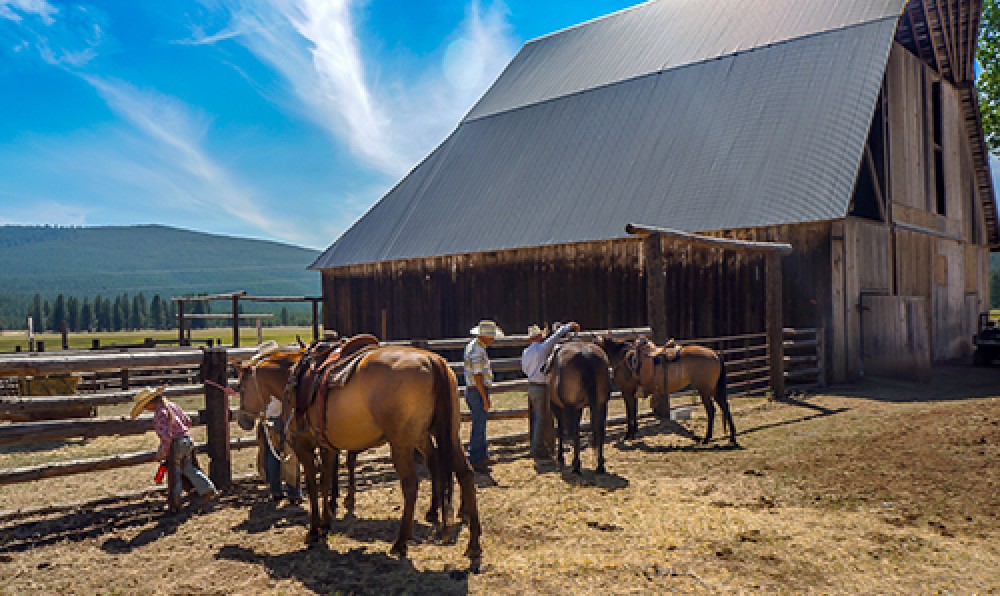- Reasons
- Property Selection
- Accessibility
- Water
- Zoning
- Improvements
- Livestock
- Finance
- Taxes
1. Reasons for Buying or Selling a Ranch or Rural Estate
For many people the thought of owning a piece of the Wild West can be more than a fantasy. Whether you see yourself as a part-time cowboy, a city escape artist, a fisherman, hunter, or a person who wants to spend time in a special outdoor setting with family and friends, maybe it’s time to get the lay of the land and make your dream a reality. You may be considering a working ranch raising livestock or developing the property and creating county estates for resale.
Ranches are often set up to generate income for the owner. At a minimum, the revenue might offset some or all of your operation costs and could provide tax advantages. It is worthwhile to investigate if livestock can be grazed on your land, crops grown (hay is popular), and if hunting or fishing access privileges can be sold. You can also look at generating income from short-term rentals for corporate or family retreats, development opportunities, mineral rights, and more. For recreational properties, some of the same income opportunities apply.
As a ranch owner, there are many benefits waiting you. You can lease part of the land to a cattle rearer and then fail to develop the remaining portions. This act will save you thousands of Dollars in property taxes. It is a technique applied by many ranch owners so that they would be able to conserve money in their assets management. You may also qualify for the governments state land conservation plan. If you participate in this plan, you can have about 30% tax rebates. The only thing you will have to do is to leave portions of the land undeveloped. The idea is that by leaving that portion undeveloped, you are helping the government in the conservation of the rural area and therefore deserve to be compensated. As the price of land in the cities increase. Many wealthy men move to the rustic areas of the country where land is cheap
Owning a farm or ranch can provide you with so many rewards. Not only do you get to enjoy fresh air on a daily basis, but you also get the added benefit of the peace and serenity that rural living provides. If you buy a property without asking certain questions, however then you might come to regret it. Nobody wants to see you go through this experience. Here are some things to ask before taking the plunge into ranch ownership.
If you are selling you may want to move closer to your work or family or are retiring, and maintaining the property is more than you chose to do.
Whether you’re buying or selling, consult with a knowledgeable Realtor,make a good plan and follow it.

2. PROPERTY SELECTION
This is where the fun begins.. Is it finding a long-term, secure investment, building a family legacy or getting back to life’s more simple and tangible moments? For many people, owning a western ranch means privately and exclusively relaxing on a covered deck enjoying peak views or fly-fishing for huge rainbow trout just off the back porch or hearing elk bugle in your own hay meadow. Or do your ranch ownership priorities lean toward productivity such as hay production, controlling senior water rights, producing an exceptional herd of cattle? Perhaps a ranch could serve as a business need for entertaining clients or as a recreational escape from the break-neck pace of the city?
Similar to considerations when purchasing a home or a business, note your wants and needs for location and amenities. Rather than considering the strength of a particular school district or criminal activity within a particular area, a ranch purchase requires consideration of surrounding land elevations, seasonal temperature ranges, property access issues, and access to air travel/FBO’s, travel times for accessing shops, restaurants, medical care and community events. Would you prefer to own a ranch with high peaks or foothill terrain that overlooks rivers or streams? Establishing and noting this type of criteria will help you to pinpoint the geographic parts of the country that best fit your goals. Once you have a handle on your ranch goals, regional preferences and the surrounding property attributes that you value, you are ready to begin your search.
There are many beautiful valleys and alpine meadows in the Sierra Nevada and Coastal Mountain Ranges. Some are quite remote with limited access and will require roads constructed and power brought in so consider these expenses into the purchase price. Some are fully developed with good access and with all the amenities with an initial increased purchase price as compared to unimproved property.
Know, or work with someone who knows how to optimize ranchland fundamentals.

3. ACCESSIBILITY AND LOCATION
While property location has a great impact on the value of real estate. Looking at travel time to your ranch for you, your family and friends is of equal importance. There are some beautiful properties that are so far from a store that you may have to pass on it if that is a convenience you need to have. If you are working away from your property and need to be within a certain distance to your job, you will need to take this into consideration also. For the rancher or farmer without outside employment, access to a grocery store may be your only concern as far as location goes.
A survey is a good tool to determine what kind of access a property has. Landlocked property can sell, but it is very important to know what your options are. If the access is limited, it is likely that the potential use will be limited.
The elevation of the property is also important. Access in winter can be limited if you’re above the snow line.
If you will be keeping livestock or planning on it at a later date, you will want to have adequate grazing land on the property and for winter feeding you might need some acreage for growing hay crops unless you plan on buying your winter feed. For additional grazing land you may want to be adjacent to or near Federal land that you can lease.
If you have plans to possibly subdivide or develop in the future, you will need to know if the property is currently enrolled in a land conservation protection program (Williamson Act in California). This program gives property tax reliefs to owners of farmland and open-space land in exchange for a ten-year agreement that the land will not be developed or otherwise converted to another use. Once enrolled in this program it is not a simple process to un-enroll.

4. WATER
Consider Water Access and Rights. If there is water on the property – above or below ground – it is very important to understand the water rights. In general, the older the rights, the better they are preserved for the owner. Properties with streams, creeks or springs are always in demand, but can be hard to find. It is good to keep in mind that access to nearby water resources in state and national forests for recreation can often satisfy your needs without the cost of ownership. For livestock operations, a good supply of water will be required, especially if irrigation is needed.
Many ranches have water rights on paper, but understanding the priority of the water right and timeframe-of-use relative to water right decrees determines your ability to maintain or build enhancements on historic ranches. What are your water rights, how can they be used?
Domestic water from a well should be researched. How reliable is the well in drought periods, how many gallons per minute and what is the water quality?
Ranches and farms that require irrigation also need to apply the same research to irrigation wells. Properties with a mining history should pay particular attention to contaminates in the water. This water should be tested.

5. Zoning
Regulations pertaining to zoning — such as the density that permits development, subdivision regulations, and the floodplain — can affect use of the property and permitting. You can have a beautiful, well-located property but, because of its zoning or land-use classification, you find that it’s not adaptable for the intended use. Even a sizeable tract of land might be zoned for only one house. knowing the use of a property can be significantly impacted by wetlands or the floodplain. Several sources are used to locate the information – Water Management Districts and Zoning Departments are the most helpful.

6. IMPROVEMENTS
Consider improvements such as roadways, outbuildings, solar systems and landscaping into your purchase price. These amenities usually cost much more to construct than the price dictates. If you would need these improvements anyway after buying the property, they could be considered “free” or nearly so with the purchase, assuming you don’t overpay for the property. As an example, the average cost of an in-ground pool is $30-35,000. The selling price of the property will probably not reflect this additional amount. If you were going to install a pool anyway, you just saved some or most of the cost. The same logic applies to a solar system and roadway surfaces.
Outbuildings can work for or against you. If they are unnecessary, broken down structures, it will cost you to remove them which might negatively affect the selling price of the property. For ranch and farm property, a barn and/or machine shed is definitely desirable and usually would cost much more to construct than the selling price reflects. In fact, they may also be considered “free” in the purchase price.

7. LIVESTOCK
“Should I get into the cattle business?” If land was bought as a place to spend leisure time, conflicts of interests may develop by entering the cattle business. There is always something to be done on a beef cattle ranch – stock to tend, water to check, and fence to mend or build. Property owners need to enter ranching with eyes wide open and have a plan to balance ranch responsibilities with dreams of leisure. Ranching can be strenuous and require a substantial amount of hours; so you should make sure yoi have the physical health, energy and time to manage a cattle business.
The following questions should be addressed:
- How much land and cattle do I need?
- How much can I realistically care for?
- Is stewardship of natural resources important? (Natural resources are not immune to the effects of man and beast – maintenance and improvement of these resources require effort.)
- What type of cattle business do I want – cow/calf or stockers?
- Do I have a preferred breed of cattle in mind?
- Am I willing to consider livestock best suited to my ranch environment?
- Am I minimizing property tax burden by raising cattle?
- Financial Considerations
Before deciding whether to go into the cattle business, gather as much information as possible. A trustworthy, knowledgeable source of information is a valuable asset.
The best source for help is a successful neighbor, but successful is a subjective term. If neighbors have managed their ranch for two decades or more, through at least one drought, and the appearance of their ranch and livestock are appealing, they qualify as a good information source.
Local county agricultural extension agents are professional educators and provide a window to a vast array of information and resources. If they don’t know the answer, they can find someone who does.
US Department of Agriculture Natural Resources Conservation Service (USDA-NRCS) is federally funded and works with landowners in conservation planning and assistance. Find a local veterinarian with interest and expertise in large animals and involve them in development of a preventative herd health plan. There is no substitute for their knowledge.
Do your research on cattle ranching before entering in to this endeavor.

8. FINANCE
Finding the right lender is critical to the success of the transaction. You don’t want to get to closing and find out that there’s a problem because the lender didn’t understand agricultural property. Buying rural property is different than buying a house inside the city limits.
Having a lender who specializes in financing rural land makes all the difference.
Because of the high capital needs and the cyclical nature of agriculture, farmers and ranchers are best served when they find a lender they can work with over the long term.
The lender needs to understand the nuances that go with rural land. They have to understand everything that we as rural brokers understand. They need to know the loan products, be familiar with rural land values and understand rural appraisals, mineral rights, water rights, animal stocking rates, crop yields and all the other factors that are different with agricultural land.
When financing through a Farm Credit cooperative, a customer should consider how its patronage payments could effectively reduce the cost of borrowing from the co-op.
It’s advantageous to work with a lending institution that employs in-house certified rural appraisers or lending staff who are certified to appraise rural property. For example, many loan officers with Farm Credit lending cooperatives can appraise property up to a certain value, and can do it faster than lenders that have to use outside fee appraisers.
Agriculture has its ups and downs, and a situation that benefits one sector of the economy might challenge another. Farmers and ranchers should look for a lender that will stand by them even during a difficult or challenging economic environment. Farm Credit lenders, for example, have been financing agriculture and rural land for nearly a century.

10. TAXES
Properties with special wildlife habitats and/or sensitive ecosystems may be candidates for conservation easements. In turn for agreeing to protect a portion of your land from development, you may receive a payment from a conservation organization and/or tax benefit that can often help offset a substantial amount of your property acquisition cost. The Williamson Act in California will give you a break on your property taxes in exchange for not developing your property for at least 10 years. Many California ranchers take advantage of this tax break by agreeing to keep their grazing land undeveloped.
The IRS allows you to deduct certain operating expenses related to your cattle ranching operation. As of 2011, you may qualify for deductions for certain costs associated with raising cattle, such as breeding fees and livestock feed. In certain cases, you can also deduct labor expenses, including wages, worker’s compensation insurance and health insurance. If you have mortgages on your farm, you can typically deduct the interest you pay on your loans. Each expense category has its own deduction rules and certain categories may limit the amount you can deduct
You may qualify for deductions associated with certain conservation costs. The IRS only allows you to deduct conservation costs related to land you own or have used in your ranching business. Conservation expenses can include money spent for grading your land or restoring soil fertility. You may also qualify for a deduction for expenses associated with the construction of dams, drainage ditches or ponds. However, the IRS does not allow you to deduct expenses for filling or draining wetlands.
The IRS limits deductions you can take for capital expenses. Typically, you cannot deduct expenses incurred by improving, buying or renovating vehicles, buildings, equipment or fencing. You also cannot deduct money spent to purchase livestock. However, the IRS does allow you to take a deduction for start-up costs incurred for a new ranch.
The IRS allows deductions for the depreciation of certain capital assets commonly owned by cattle ranchers. Allowable deductions include depreciation of buildings, certain livestock, machinery, ranch equipment and vehicles. However, you cannot take a deduction for depreciation of land. To qualify for a depreciation deduction, you must own the asset and must use it in your ranch operation.
If you have operational expenses that exceed your ranch income, you may qualify for an operational loss deduction. The IRS categorizes operational losses as occurring from at-risk or passive activities. At-risk activities can include the loss of money borrowed for your ranch operation, for which you are liable. At-risk losses can also include the loss of property you pledged to secure a loan. Passive activities typically involve losses of income from rental assets. For example, if a tenant fails to pay rent for land you own, you may qualify for a passive loss deduction. The IRS imposes different deduction limits for passive and at-risk losses. Meet with a tax consultant that is fully knowledgeable of ranch and farming tax laws.

The author is an agent for California Outdoor Properties, Inc. and can be reached at david@ranchandlandwest.com.





